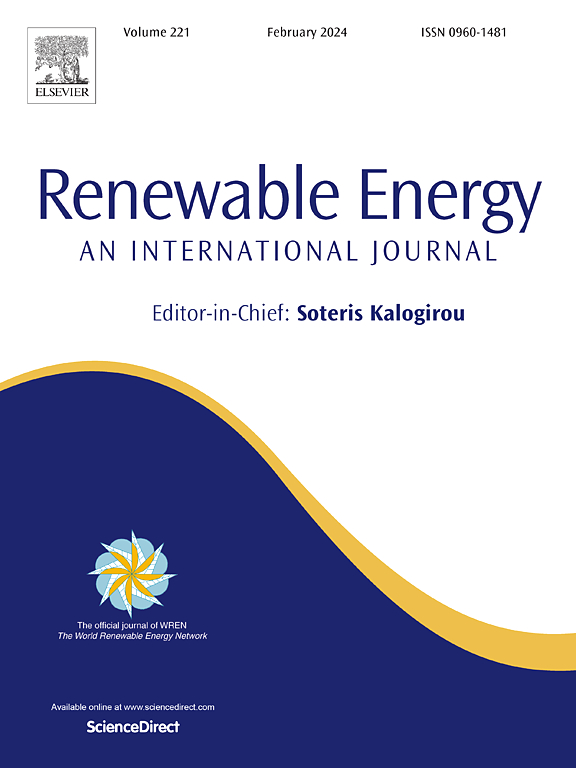到2050年实现北海净零能源系统的脱碳途径
IF 9
1区 工程技术
Q1 ENERGY & FUELS
引用次数: 0
摘要
北海地区位于欧洲西北部,在未来几十年里,该地区正在转变其能源系统,其大多数周边国家都做出了净零排放的承诺。在本文中,我们评估了到2050年北海地区实现净零未来的不同脱碳途径,特别关注海上能源系统的发展。拟议的情景比较了不同的缓解战略(即中间目标与碳预算)、不同的海洋空间规划(即在北海开发多用途空间区域与单一用途空间)和不同的海上技术学习演变(即快速降低海上风电成本与延迟降低海上风电成本)。结果表明,与确定十年缓解目标相比,在过渡期内分配碳预算是成本最优的,可使系统成本降低2000亿欧元(3%)。关于空间的使用,结果表明,多用途战略可节省高达1000亿欧元(1.5%),允许每年整合超过350吉瓦的海上风电和1200 PJ的海上氢气生产。就海上技术的学习率而言,快速学习情景(到2050年固定底部海上风电的资本支出达到1500欧元/千瓦)比基线情景(到2050年固定底部海上风电的资本支出达到2100欧元/千瓦)减少了2500亿欧元(3.75%)的累积系统成本。在空间利用方面,模拟情景中分析的海上风电部署水平覆盖了北海所有空间的5 - 8%,以及未被其他活动占用的北海空间的13 - 22%。本文章由计算机程序翻译,如有差异,请以英文原文为准。
Decarbonisation pathways towards a net-zero North Sea energy system by 2050
The North Sea region, located in North-western Europe, is on the way to transform its energy system in the coming decades, with most of its surrounding countries having net-zero pledges in place. In this paper we evaluate different decarbonisation pathways towards a net-zero future by 2050 in the North Sea region, with a specific focus on the development of the offshore energy system. The proposed scenarios compare different mitigation strategies (i.e., intermediate targets versus a carbon budget), different marine spatial planning (i.e., development of multi-use of space areas in the North Sea versus single-use use of space) and different learning evolution of offshore technologies (i.e., quick reduction of offshore wind costs versus delayed reduction of offshore wind costs). Results show that distributing the carbon budget over the transition period is cost-optimal compared to defining decadal mitigation targets, providing 200 bn€ (3 %) lower system costs. Regarding the use of space, results show that a multi-use strategy provides savings of up to 100 bn€ (1.5 %), allowing the integration of over 350 GW of offshore wind and 1200 PJ of offshore hydrogen production per year. In terms of the learning rates of offshore technologies, the quick learning scenario, where fixed bottom offshore wind reaches a CAPEX of 1500 €/kW by 2050, entails 250 bn€ (3.75 %) less cumulative system costs than the baseline scenario, where the CAPEX of fixed bottom offshore wind reaches 2100 €/kW by 2050. In terms of use of space, the offshore wind deployment levels analysed in the modelled scenarios cover 5–8 % of all North Sea space, and 13–22 % of all the North Sea space not claimed by other activities.
求助全文
通过发布文献求助,成功后即可免费获取论文全文。
去求助
来源期刊

Renewable Energy
工程技术-能源与燃料
CiteScore
18.40
自引率
9.20%
发文量
1955
审稿时长
6.6 months
期刊介绍:
Renewable Energy journal is dedicated to advancing knowledge and disseminating insights on various topics and technologies within renewable energy systems and components. Our mission is to support researchers, engineers, economists, manufacturers, NGOs, associations, and societies in staying updated on new developments in their respective fields and applying alternative energy solutions to current practices.
As an international, multidisciplinary journal in renewable energy engineering and research, we strive to be a premier peer-reviewed platform and a trusted source of original research and reviews in the field of renewable energy. Join us in our endeavor to drive innovation and progress in sustainable energy solutions.
 求助内容:
求助内容: 应助结果提醒方式:
应助结果提醒方式:


